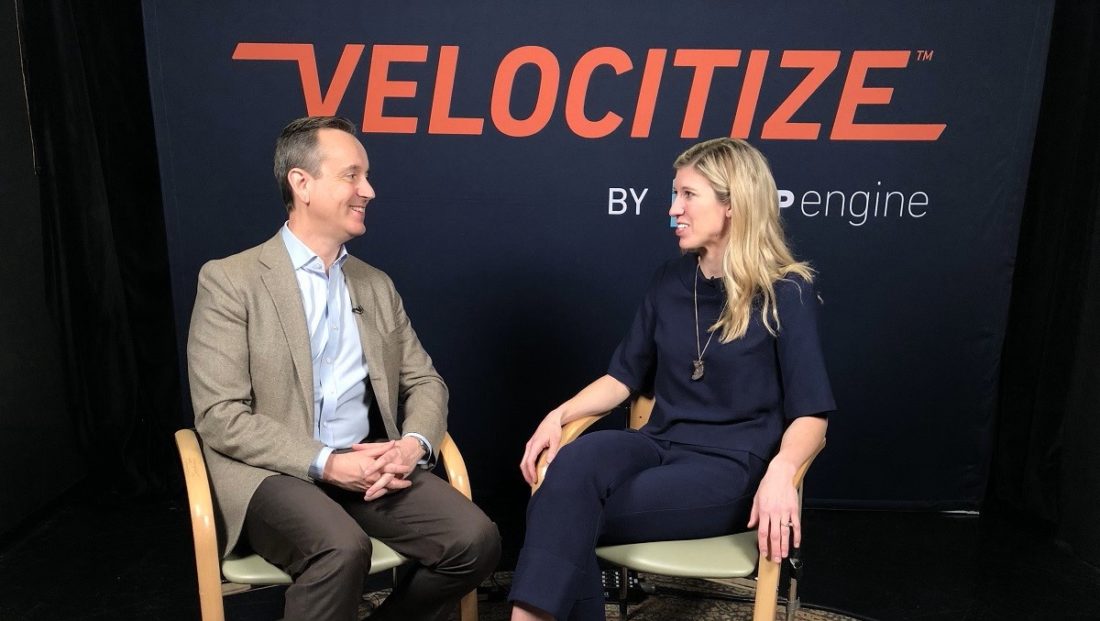One of the biggest challenges and opportunities is that there are more places a brand can interact with their audience than ever before. It’s not just their website and mobile phones; it’s also in their cars and in more personal spaces like the home through the Internet of Things.
Lauren Leva is the VP of Marketing Services at Grafik, a branding and marketing agency specializing in design, strategy, and customer engagement.
In this episode of Velocitize Talks, Leva shares her thoughts on marketing trends, the omnichannel approach, and brand strategy.
Marketing across the board (1:14)
Something we focus on is what makes sense for each brand in terms of where they should show up. How can we make sure that experience is consistent and awesome for clients?
Today there are a number of opportunities for brands to enter into the intimate spaces of consumers’ lives. While it can be advantageous to reach them in their personal space, it can also be risky.
When Folger Shakespeare Theatre needed a creative reboot, Grafik produced an award-winning marketing strategy that expanded its audience by replacing traditional ad buys with omnichannel marketing, incorporating social media, digital, radio and more. Instead of focusing on an individual channel, the omnichannel approach takes on the entire customer experience.
Folger saw a 60% increase in Facebook followers from ads and a 60% increase in show ticket pageviews.
Sound advice (2:17)
I think [voice branding] is not just focused on the smart speaker device, but how you can also drive awareness that those utilities are available.
Grafik recently worked with iconic news outlet C-SPAN on a rebrand of its logo, visual identity and tagline. The national campaign Grafik helped launch across outdoor, digital and TV spots was designed to remind viewers that they can tune in live to C-SPAN’s unbiased reporting online, via smart speaker, or TV.
Considering the mass adoption of smart devices, many brands are optimizing their marketing strategies for voice search. They’re accomplishing this by using more natural language—words and phrases people actually use—into the content.
Getting to know you (5:16)
When we are collecting consumer data either through cookies or through forms, we are trying to keep that list really limited to what we truly need and will be able to use to make that experience better, not just in a self-serving way for the brand.
To comply with GDPR, marketers are now required to ask customers for permission to collect their data. In turn, audiences have a fundamental right to deny brands access when brand authenticity or reciprocal value is in question. To be trustworthy, brands must be transparent in how customer data will be used.
One consumer data collection strategy used by Grafik when designing their brand campaigns is progressive profiling. Profiling allows marketers to collect pieces of data throughout the buyer’s journey instead of asking for all of it upfront.
Switching channels (7:54)
What we’ve tried to supplement from a brand and marketing perspective is complementing those onsite efforts with ad campaigns that are going to reinforce that message or call-to-action before, during, and after the event.
There are many advantages to omnichannel marketing, mostly in relation to reaching consumers where they are. On any given day, it’s estimated that 98% of Americans are switching between devices and are looking for a seamless online experience.
One way to use the omnichannel approach is geo-fencing at conferences, trade shows or events. Leva advises clients to interact with potential customers by serving up mobile ads and following up with additional information and demos post-event to stay in touch with leads.
Defining purpose (9:14)
We talk to their customers, people who love them and people who don’t to really get a well-rounded picture. If they are going to go out and say this is their purpose and mission, can they back that up with their products and business practices?
The Edelman Earned Brand study reveals that nearly two-thirds (64%) of consumers around the world now buy in accordance with their beliefs and “will choose, switch, avoid or boycott a brand based on where it stands on the political or social issues they care about.”
In a blog post, Leva states that “companies are now more willing than ever to take a stand on issues related to their brand’s purpose, whether that be women’s health, gun reform, or climate change.”
Brands must clearly communicate their purpose and what they stand for as it has a huge impact on a consumer’s intent to engage and advocate for the brand.
For more information on Grafik, check out their website and follow them on LinkedIn and Twitter at @grafik_agency.
This interview was originally recorded in Washington, D.C. in February 2020.
